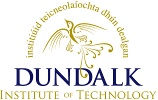Kearney, Daithi (2021) Forging the Dance: The Expression of Regionality in Irish Folk Theatre. In: Timbres of Identity: Ethnomusicological Approaches to Music-Dance and Identity. Association of Ethnomusicology, Bursa, Turkey, pp. 39-57.
|
PDF
- Published Version
Download (737kB) |
Abstract
Siamsa Tíre, The National Folk Theatre of Ireland, operates as a regional theatre company that develops performances through traditional music, song and dance rather than spoken word. From early productions in a local convent hall in the 1950s, performances are now staged in a purpose-built theatre in the town of Tralee, Co. Kerry, the design of which is modelled on an ancient stone structure in the region. Importantly they also established two rural centres in the 1970s which facilitated training and smaller performance opportunities for members of the cast and their importance to some members of the community as a connection with a rural heritage and the development of the company remains. Although the company has performed nationally and internationally throughout its history, its connection to place is reinforced through both physical spaces and the incorporation of local music, and more particularly, dance styles. In addition to the location of the company in Co. Kerry, the representation of regional themes on stage is an integral part of the Siamsa Tíre productions. The original production, Siamsa or Fadó Fadó is based on the life experiences of some of the early cast but many aspects of custom and musical repertoire are recognisable beyond the region. Ding Ding Dederó (1991), Tearmann (2006) and Moriarty (2009) focused on local figures - John Moriarty was a local philosopher and the principal character in Tearmann is based on a local dancing master. Ding Dong Dederó is perhaps the most complex of the productions in terms of understanding a regional stage identity as it both represents the life of North Kerry dancing master and blacksmith Jeremiah Molyneaux, whose dancing style is integral to the company's performances and raison d’etre, and develops contemporary dance forms that involve and evolve that dance style. This paper critically considers the relationship between the physical location of Siamsa Tíre and its role as a regional, national and international theatre company, focusing on how selected productions construct and reflect a regional identity and reflect the process of glocalisation and respond to changes in the arts and society. Furthermore, it acknowledges the importance of the company to the local tourist industry and the potential role of tourism in influencing the performance of music and dance.
| Item Type: | Book Section |
|---|---|
| Subjects: | Arts and Humanities Arts and Humanities > Music |
| Research Centres: | Centre for Creative Arts, Media & Music |
| Depositing User: | David Kearney |
| Date Deposited: | 18 Jan 2022 15:17 |
| Last Modified: | 18 Jan 2022 15:17 |
| License: | Creative Commons: Attribution-Noncommercial-Share Alike 4.0 |
| URI: | https://eprints.dkit.ie/id/eprint/772 |
Actions (login required)
 |
View Item |
Downloads
Downloads per month over past year

